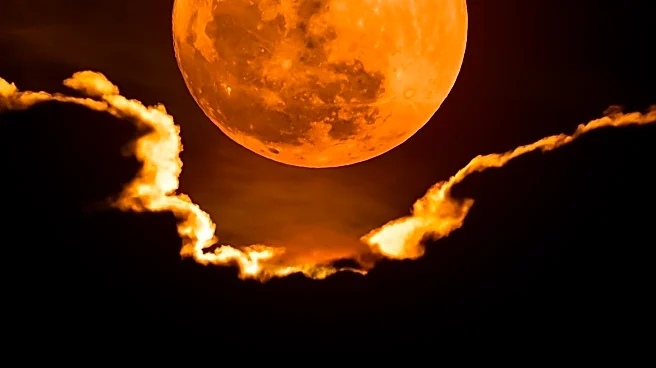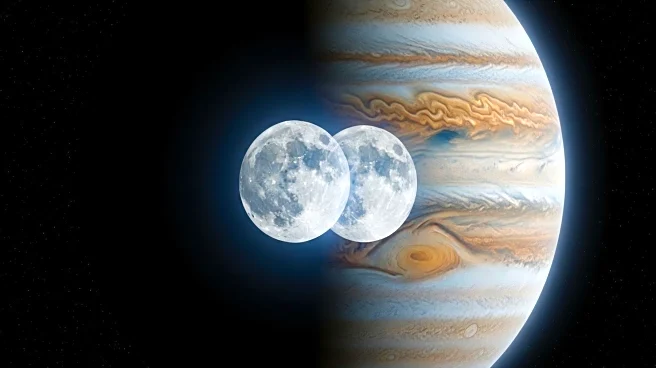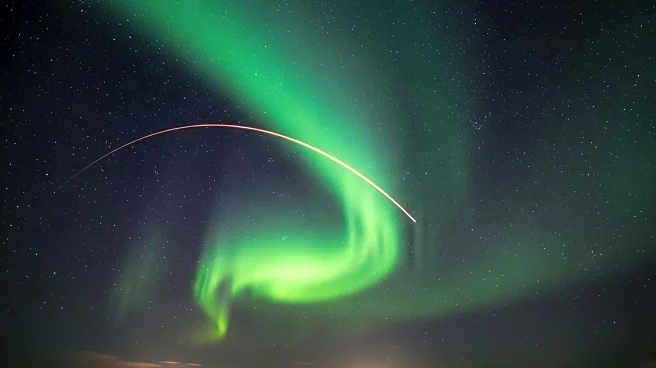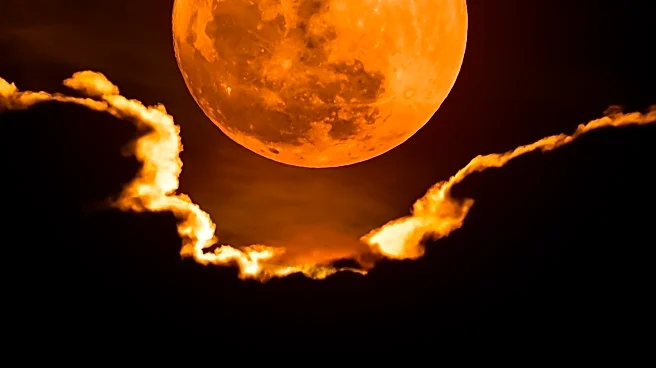What is the story about?
What's Happening?
Astronomy enthusiasts are encouraged to step outside tonight to observe the globular cluster M22, which is located near the lid of Sagittarius' Teapot. Despite the presence of a Full Moon, M22 shines brightly at a magnitude of 5.1, making it visible with binoculars or any size telescope. The cluster is situated approximately 2.5 degrees northeast of Lambda Sagittarii, the top of the Teapot asterism's lid. M22 is one of the closest globular clusters to Earth, at just 10,000 light-years away, which enhances its brightness in the sky. The cluster contains around 70,000 stars and is ideal for observation at lower powers, while higher powers allow for exploration of its star-packed center. The Full Moon's illumination does not significantly hinder the visibility of M22, providing a good opportunity for observation.
Why It's Important?
The opportunity to observe M22 offers a unique chance for both amateur and professional astronomers to study one of the closest globular clusters to Earth. This event highlights the accessibility of astronomical phenomena to the public, fostering interest and education in astronomy. Observing such clusters can provide insights into the formation and evolution of stars, contributing to scientific understanding of the universe. Additionally, events like these can inspire future generations to pursue careers in science and technology, supporting the growth of these fields in the U.S.
What's Next?
As the Full Moon continues to illuminate the night sky, astronomers and enthusiasts may plan further observations of M22 and other celestial objects. The visibility of M22 during this period may lead to increased public interest in astronomy, potentially resulting in more community events and educational programs. Observatories and astronomy clubs might organize viewing sessions to engage the public and provide educational resources about globular clusters and their significance.
Beyond the Headlines
Observing celestial events like the visibility of M22 can have cultural and educational impacts, encouraging people to connect with the natural world and appreciate the vastness of the universe. Such events can also promote environmental awareness, as they remind observers of the importance of preserving dark skies free from light pollution. This can lead to advocacy for policies that protect natural night environments, benefiting both wildlife and human health.
AI Generated Content
Do you find this article useful?













